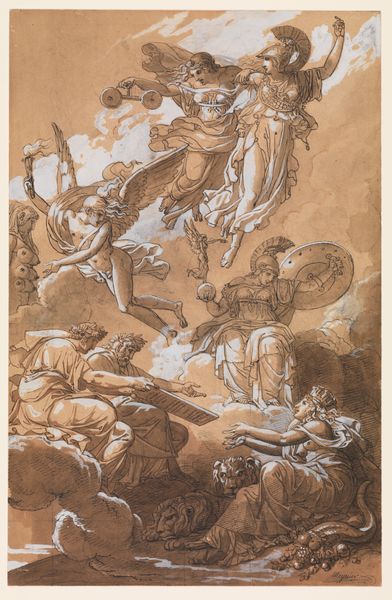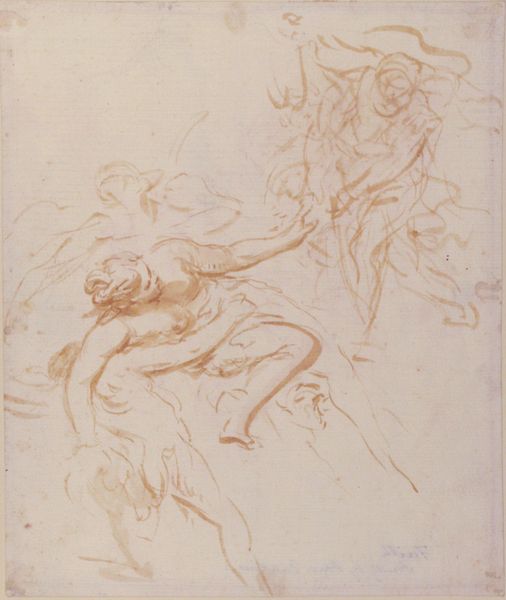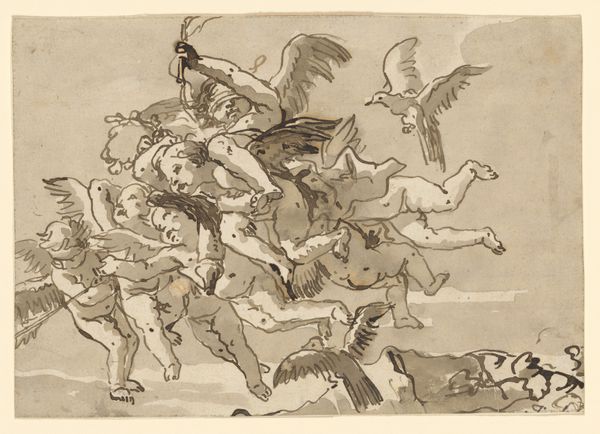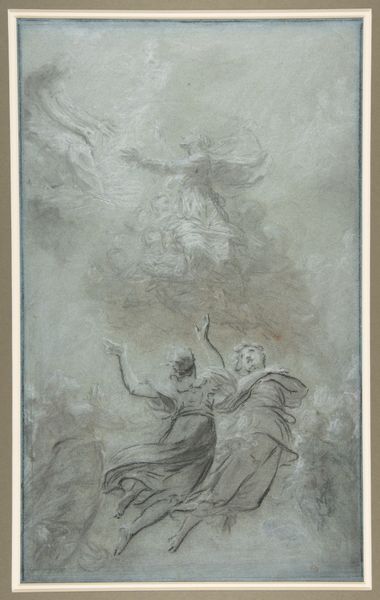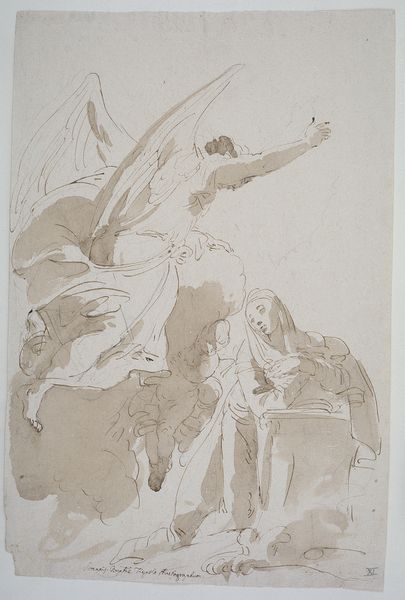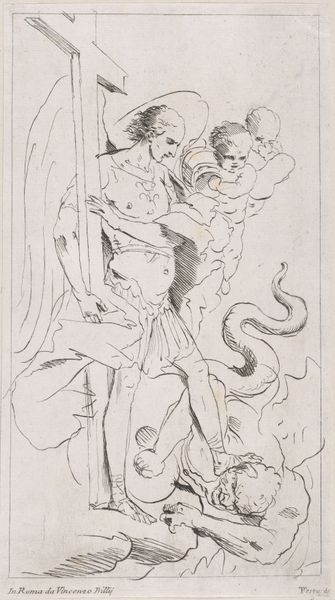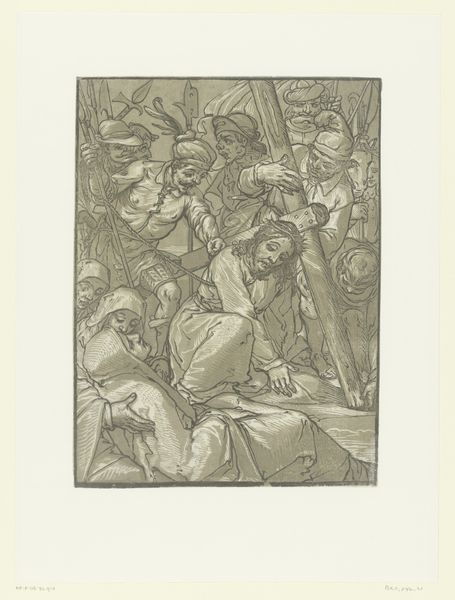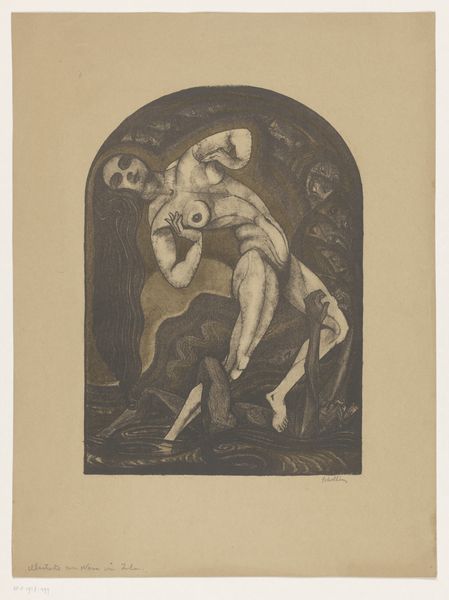
A Man Tormented by Jealousy Takes Revenge on Cupid 1785 - 1795
0:00
0:00
drawing, print
#
drawing
#
neoclacissism
#
allegory
# print
#
figuration
#
form
#
cupid
#
line
#
history-painting
#
nude
Dimensions: Sheet: 20 1/4 × 16 3/4 in. (51.4 × 42.5 cm) Image: 14 1/2 × 13 3/4 in. (36.8 × 35 cm)
Copyright: Public Domain
Editor: Here we have "A Man Tormented by Jealousy Takes Revenge on Cupid" created between 1785 and 1795 by Bénigne Gagneraux. It appears to be a drawing or print with strong Neoclassical elements. The stark lines and classical figures are striking, but the narrative seems quite violent. What’s your interpretation of this work? Curator: From a materialist perspective, I’m drawn to the process of printmaking itself. Consider the labor involved in creating these precise lines, likely through etching or engraving. This wasn’t a spontaneous act of creation, but a carefully constructed, reproducible image. Editor: So, you're focusing on the process as a form of labor. Does that influence how we see the subject matter? Curator: Absolutely. This print likely circulated among a specific social class. Think about who could afford it, display it, and the message it conveyed within that context. The dramatic, theatrical gestures almost seem staged, commodified. Does it reinforce certain power structures of the time, perhaps ideas around love and jealousy? Editor: That's interesting. It makes me think about how the ‘revenge’ is also a commodity, a story being sold. Was this type of imagery common? Curator: Neoclassicism often looked to the past for models of behavior and virtue, but here, we have vice, on display. Considering Gagneraux was working during a period of significant social upheaval, could this violence reflect anxieties about shifting social dynamics? Or is it a moralising tale about unchecked passion and possessiveness, a warning against disrupting the status quo? How would this image be interpreted by different social classes in that era? Editor: I never considered the social implications of printmaking itself. Thinking about it as a form of production adds a whole new layer to understanding the message of the artwork. Curator: Indeed, the materials and methods always shape the message, informing our understanding of both the artwork and its reception within its specific social and historical context.
Comments
No comments
Be the first to comment and join the conversation on the ultimate creative platform.

